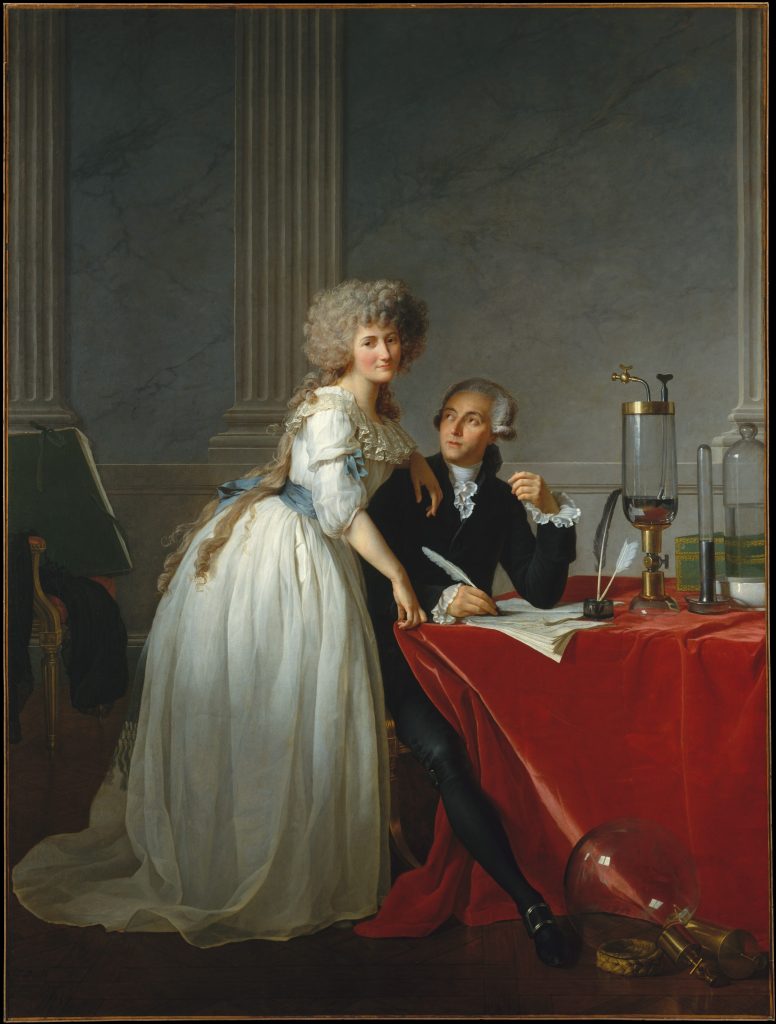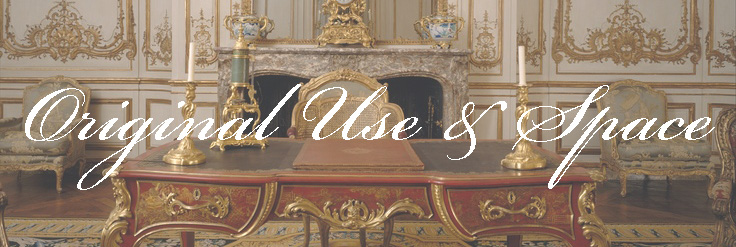
Jacques Louis David, Antoine-Laurent Lavoisier (1743–1794) and His Wife (Marie-Anne-Pierrette Paulze, 1758–1836), ca. 1788. Oil on canvas. Dimensions: 102 1/4 x 76 5/8 in. (259.7 x 194.6 cm). The Metropolitan Museum of Art, Purchase, Mr. and Mrs. Charles Wrightsman Gift, in honor of Everett Fahy, 1977. Accession Number 1977.10.
In Antoine-Laurent Lavoisier (1743–1794) and His Wife (Marie-Anne-Pierrette Paulze, 1758–1836), David presents Lavoisier seated at a table as a learned man of science and writing. His wife is presented as an accessory to his knowledge, leaning on his shoulder with no objects to indicate her identity other than her garments. Is this an accurate depiction of gender in eighteenth-century France? What can objects reveal about identity? Explore these pages to find out.
These pages tell the story of two tables whose spatial composition, function, and intended location illuminate the impact of gender on the eighteenth-century Enlightenment experience. The Enlightenment inspired intellectualism and individualism in both men and women. Yet an emerging differentiation in tables suggests that gender determined access to and engagement with these principles. Functioning as desks, tables provided as a private place that enabled thought and writing, yet tables also possessed the power to restrict activities. As Mimi Hellman has compellingly said, eighteenth-century objects therefore serve as “exemplary social actors” that reveal information about the social and cultural capacities of the user (Hellman 436).
Placing figures and objects at the tables reinstates original use to illuminate the impact of gender on Enlightenment principles. Joubert’s bureau plat, designed for King Louis XV, offers an expansive space for a man to sit comfortably with multiple papers, maps, and scientific instruments. Oeben’s mechanical table, designed for Madame de Pompadour, can be used for the toilette or for writing and reading. The table’s smaller size and delicate qualities emphasize the femininity of the user. Both desks incorporate global material to indicate awareness of the world. But, the public location of the masculine table was intended to impress visitors with this awareness, whereas the private location of the Oeben table was intended to inspire only a single user.
To begin the story, click here.
Project by Emma Snover.
Pages
practice
